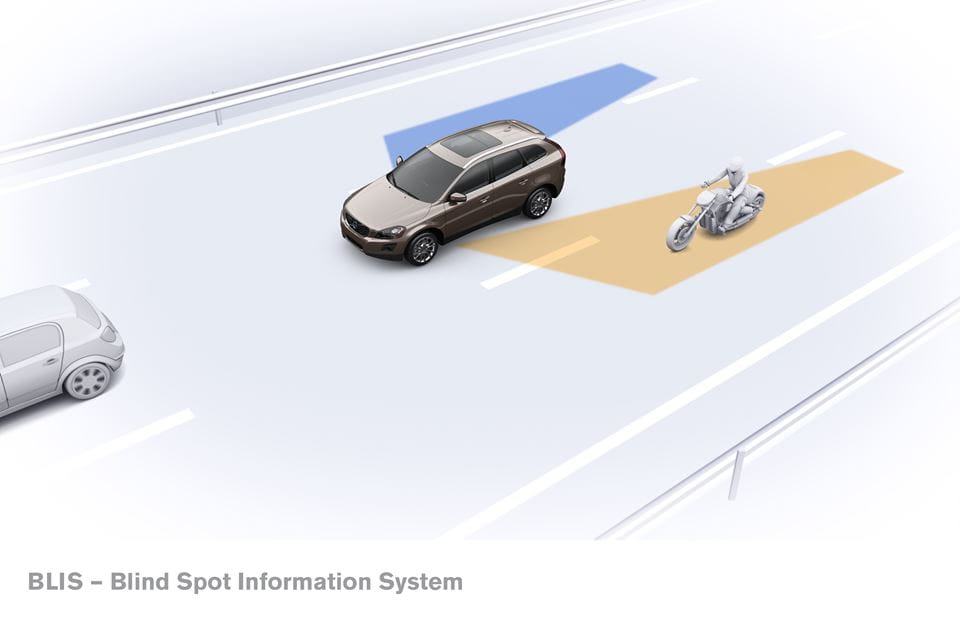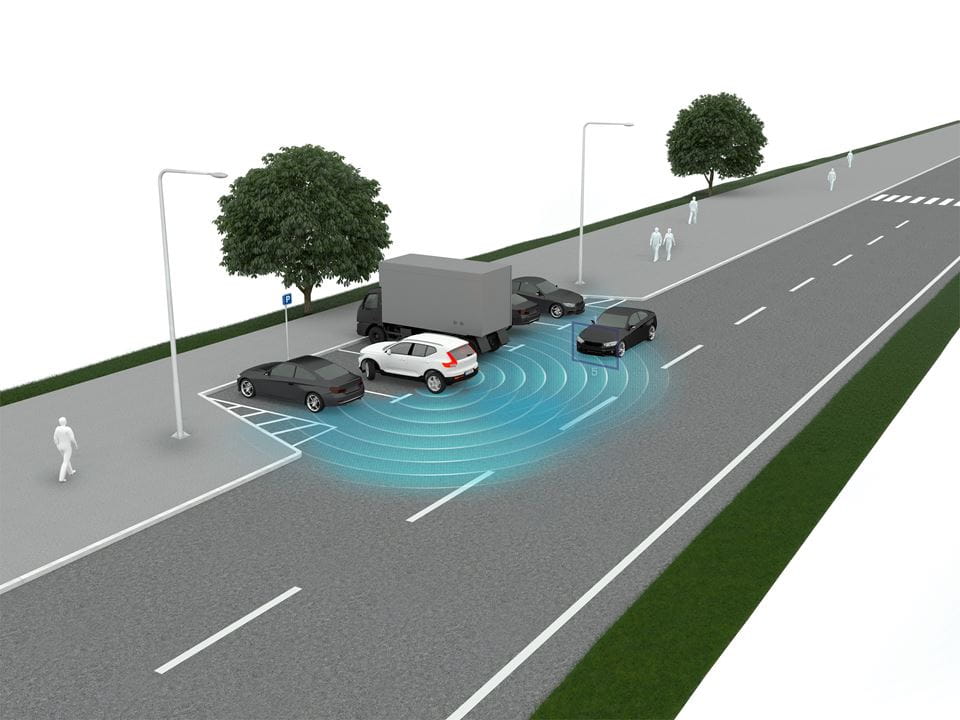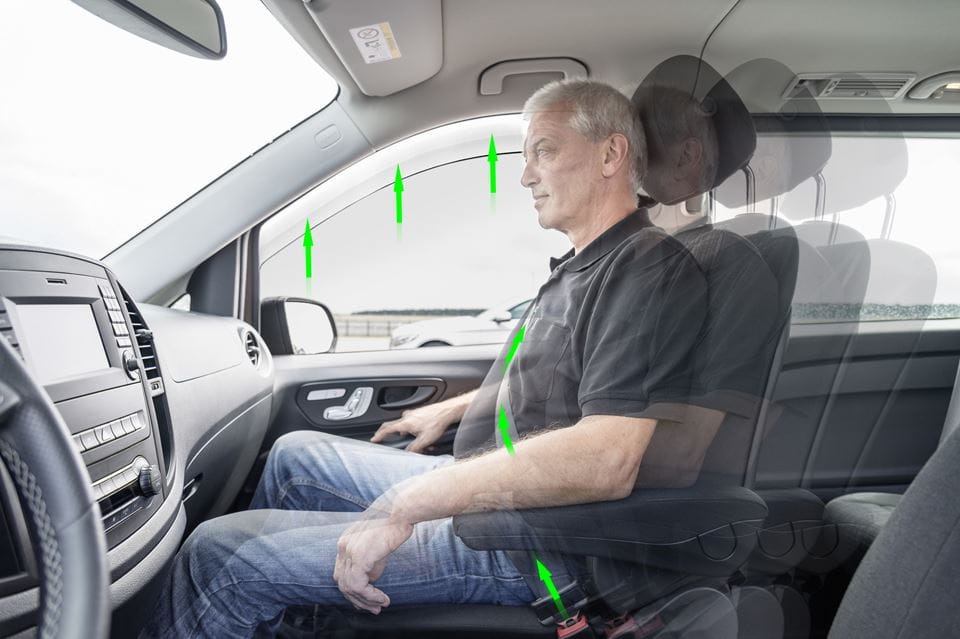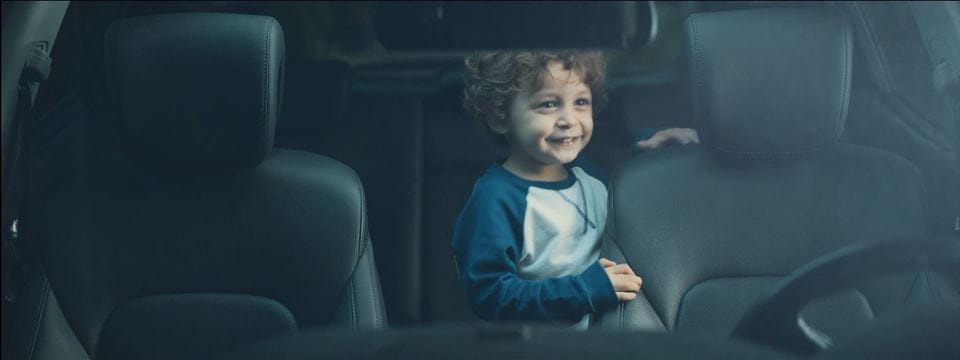Safety First
6 driver assistance systems that can save lives
Of course, the safety of drivers and the occupants of their leased vehicle is very important to LeasePlan. It is therefore reassuring to know that car manufacturers are continuously releasing driver assistance systems which can simplify or even save the lives of drivers and their passengers. ABS and ESP were the forerunners, but in the meantime, much more ingenious systems are being assimilated. We have listed some of them for you!
Blind Spot Information System (BLIS)
BLIS (short for Blind Spot Information System) was developed by Swedish manufacturer Volvo, a pioneer in safety systems for years now. This function assists the driver in heavy traffic on roads with several lanes in the same direction. At speeds higher than 10 km/h, BLIS reacts when other vehicles are overtaking the car and have entered the blind spot. When this is the case, the BLIS light is lit constantly on the door panel. If you turn on the blinkers on the side the warning is being given while it is in this state, the BLIS light will switch to intermittent flashing with a brighter light.

Cross traffic alert (CTA)
While you are reversing out of a parking space with a limited view of the traffic situation, Cross Traffic Alert can detect oncoming vehicles and sound a warning. The technology also activates a light on the outside mirror (left or right, depending on the oncoming traffic). Cross Traffic Alert was developed in order to recognize approaching vehicles up to 14 metres away, although this distance can become less if sensor visibility is impaired. By reversing slowly, you can increase its effectiveness.

Collision Warning (CW)
Collision Warning with Auto Brake and cyclist and pedestrian detection is a safety assistance system which gives a warning when there is danger of colliding with a pedestrian or the back of a bicycle or vehicle ahead, whether stationary or in motion. There is a version which only warns you of obstacles with visual and acoustic signals, but does not brake automatically, and a version which does brake if you do not react within the expected time frame. Given that the system is designed to be activated as late as possible, to avoid unnecessary interventions, it does not always provide a solution. It can still often prevent a collision or substantially reduce the impact speed in any case. Do not adapt your driving behaviour to this system, rather, view it as a ‘trump card’ which you hope you will never need.
Adaptive cruise control (ACC)
It is still rather soon for entirely self-driving cars. Nowadays, however, we can often find standard adaptive cruise control in the new models of almost all manufacturers. With this system, a car can maintain the set speed or a set distance from the vehicle ahead. The car will also brake automatically if a pedestrian comes close. At a speed of less than 30 km/h, the system is even capable of performing a full emergency stop. It works using one or more sensors - including radar and cameras which are connected to a computer - which can detect traffic on the road in front of you. They are capable of reacting to cars which are ahead of you in your lane.
PRE-SAFE
At Mercedes-Benz they have gone a step further. They have combined primary safety, which has the purpose of preventing an accident, with secondary safety, which provides protection during a collision. At speeds above 30 km/h, PRE-SAFE monitors the dynamic state of the vehicle (speed, sway, etc.) and the actions of the driver who operates the steering wheel, the accelerator, and the brake pedal, in order to determine whether or not preventive action is being undertaken. If it is, then the system deems that a collision is inevitable, and among other measures tightens the seat belts using the reversible seat belt tensioners; optimizes the seating position of the occupants if the seats can be electronically adjusted; and, if the car sways badly or if there is lateral slip and a side collision or a rollover accident is expected, closes the automatic windows and sunroof. All the PRE-SAFE® actions are reversible: if the collision is prevented, the tension in the seat belts is released and the occupants can adjust their seats again.

Rear Occupant Alert
Hyundai looks after our youngest passengers. Rear Occupant Alert warns parents when they leave their car and are in danger of forgetting their child(ren) in the back. The system works via ultrasonic sensors which detect movements instead of weight, especially children's movements. The system reports that there are passengers in the back via the dashboard. This message appears more clearly on the dashboard screen when the driver is leaving the car. If movements are still being detected when the driver is out of the car, the car begins to honk and flash its lights. It doesn't stop there: it is likewise possible to send a message to the driver's smartphone via Hyundai's Blue Link system.



